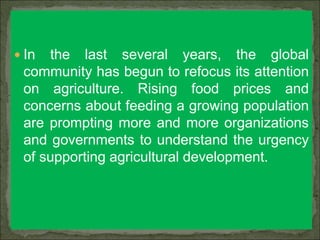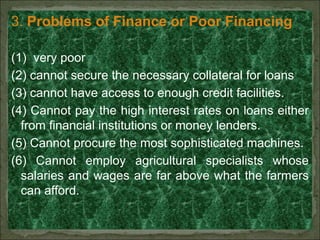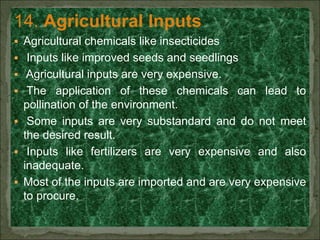Over the past 200 years, agricultural development has driven broader economic growth around the world. The Green Revolution of the 1960s-1980s doubled food production and reduced poverty. However, attention and funding for agriculture declined from the 1980s-2000s. Rising food prices and population growth have prompted a renewed focus on supporting small farmers and increasing agricultural productivity to ensure adequate food supply. The document outlines 19 specific measures that could help the Philippines' 12 million small farmers and fisherfolk become more productive and prepare the country for potential future food shortages.


































